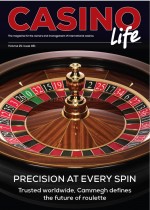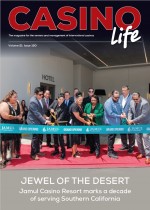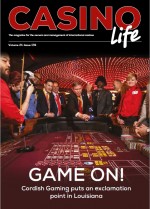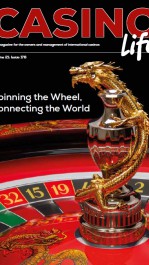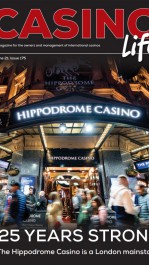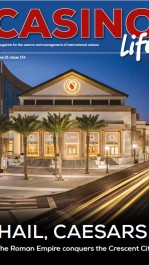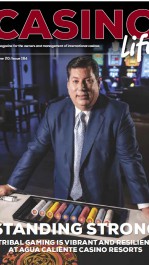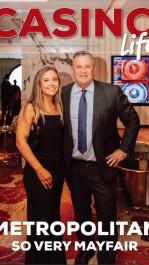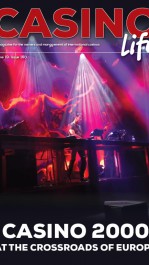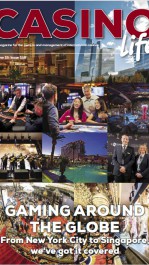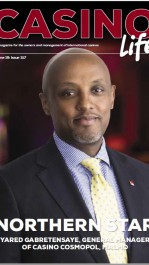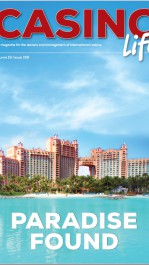Gambling has been around since the time before recorded history. In a way, it’s part of human nature. The risk versus reward has always been a challenge to human beings everywhere, ever since we emerged from the wilds of ancient Africa, and spread across the globe as the dominant species. In prehistoric times, the gamble was for survival – eat, or be eaten. That was it. Later, it became part of mysticism and magic. Shamans, temple priests, and various tribal chiefs would use gambling tools for predicting everything from victory in war, to the harvest of the seasons, to cures for ailments of all sorts.
We have archeological evidence of this from ancient Egypt, around 3,000 years BCE (Before Christian Era). Animal bones – mostly the knuckle bones of sheep – made in the form of modern dice – were found in tombs, and their use described in hieroglyphs. These Dice made from bones had dots on them, remarkably similar to the dice we now use in the casino game of Craps. In fact, the colloquial term for dice in Craps is still “bones,” and you can often hear Craps players yell out: “Roll dem Bones!” just before tossing the dice. That’s a direct reference to these ancient dice, their origin, and their use. At the time, the Egyptians used them in religious ceremonies, for the purpose of forecasting the future and learning the meaning of the Gods, or what these Gods wanted from mankind – as interpreted by the Temple Priests, or course, usually for the purpose of getting money and power, controlling the population and, to some extent, the governments of the time.
In the Christian Bible, when you read that the Roman Soldiers “cast lots” for the cloak of Christ at his crucifixion, that’s also a direct reference to Dice, and a gambling game that the Romans played at the time. This is, actually, the only reference to gambling in the entire Christian Bible, but this one mention has been enough to cause gambling to be seen as a “sin” throughout the centuries of the Christian Era. Fortunately, not so much these days – although some religious conservatives in the USA are still using this argument in their opposition to online gaming, and gambling in general. Unless, of course, it’s fundraising time, when all of a sudden it’s OK for the Church to run “Vegas Nights” and Bingo to raise money. Gambling, it seems, is a “sin” only when these religious zealots aren’t getting the loot!
But the history of gambling goes way further still. Some 2,000 years before the ancient Egyptians carved dice from animal bones, the Chinese had already invented playing cards. Although these bore little resemblance to the decks of cards we now use in our modern casinos, they were nevertheless clear forerunners of them. These cards were created as pictographs, representing various forms and values, and were actually first used as paper currency. They were traded for each other, and for goods, and also used for games of chance, and as a reward for winning. These were mostly contests of skill and war-craft, but also for commercial uses as well. Although there are no surviving examples of these early cards, their inference can be glimpsed from what has been uncovered in historical digs and documents, as far as these have been permitted to be excavated by the modern Chinese government. The earliest examples of surviving Chinese playing cards date to about 613 AD.
But what we now know as modern land-based casinos are a far more recent innovation in the human art of gambling. Yes, “Art.”
The casinos as we now know them originated largely among the affluent and royal classes of post-Renaissance Europe, when nobility – unencumbered by the need to till the soil and struggle for food and survival – found themselves increasingly more wealthy, and ever-more bored. With nothing much to do, other than to give orders to others who did all the required daily toil, these upper-classes sought to find diversions in various pursuits. Hunting was a very popular form of distraction from the endless boredom of endlessly same and mundane days of eating and sleeping.
The word “casino” comes from the Italian “casa,” meaning “house,” and was originally not used as we do today. The earliest recorded land-based “casino,” known as the “Ridotta,” dates back to Venice in the first part of the 17th century. Opened in around 1630, it was closed in 1770. But by that time the notion of this – as a place to gamble – had spread throughout Europe, where other such “houses'' were then established for the entertainment of the nobility. The phrase “idle rich” can trace its linguistic origins directly to these times, and these accurate descriptions of the lives of the landed gentry at the time.
What we now know as modern land-based casinos came to be as rooms in palaces for the nobility, and Kings and Emperors like Napoleon all had them as part of their domains. Fancy and richly-appointed, these were truly Palaces for Gambling, and that’s how we still have them today – rich looking, sometimes even gaudy, but always striking, exciting, and creating the feeling of wealth and superiority. In fact, being “treated like a King” has always been the idea behind modern casinos, where even the lowliest of humans – by rank or by economic conditions – could enter and be catered to as if they, too, were part of this elite, this nobility, and these “idle rich.”
Today’s gambling Palaces – like those in Monte Carlo – still show some of that “old World” charm, and accoutrements. These are casinos that still resemble that era, some 200-to-300 years ago, when the gambling palaces for the rich nobilities were first created, to cater to their desires.
Naturally, by the standards of the 21st century, these casinos in Monte Carlo are quite odd, and old-looking. Especially for Americans. Those casinos in the Principality of Monaco are basically just large and opulent rooms, with mostly Roulette and Baccarat. Dull, and way too “formal,” or so the impression goes among American tourists. Certainly nothing like the gambling casinos in Las Vegas, with thousands of slot machines and other kinds of gambling games everywhere, in casinos of upwards of 100,000 square feet each.
By the 19th century, the gambling houses in Europe were very popular, and as people began to immigrate more and more to the New World, they brought many of these games with them. Playing-cards and dice were among them. Dice, of course, from ancient times, but the playing cards were – by then – much more modern. What we now recognize as the casino cards we use in games like Blackjack and Poker, were actually a French invention – with some help from various other historical sources. Most historians agree that the four Kings represent the following legendary leaders from the pages of history:
- Charlemagne is the King of Hearts,
- Julius Caesar is the King of Diamonds,
- Alexander the Great is the King of Clubs, and
- King David of the Bible is the King of Spades;
The various suits of the modern deck of cards are also based on history, representing the four most notable regions of the ancient world, as this was known in the 15th century. They are as follows:
- Spades represent the Middle East empire,
- Clubs represents the Greek Empire,
- Diamonds represent the Roman Empire, and
- Hearts represents the Holy Roman Empire;
The Holy Roman Empire began with Roman Emperor Constantine, now known as Saint Constantine, the first of the Roman Emperors to convert to Christianity. He eventually became Emperor of what was then called the Eastern Roman Empire, with its capital the city of Constantinople, named after Emperor Constantine. This city was originally called Byzantium, and was founded in the 7th century BCE, later renamed Constantinople after the Roman Emperor made it his seat of power. Today it is called Istanbul, a city in present-day Turkey, an Islamic Republic.
The world’s last remaining Christian Orthodox Pope still sits in a small enclave in Istanbul. The Christian Orthodox Church is a remnant of the religious divide that – in a meeting in Constantinople in about 500 AD – resulted in the Christian faith being divided into the Catholic version, with it’s Pope in Rome, the Orthodox Christianity, with its Pope in Constantinople (Istanbul), and the third fraction breaking away to eventually become Islam, after it’s leader, the Prophet Muhammad, fathered it in about 600 AD.
The fancy European Casinos which had spread throughout the Continent, and into England as well by the end of the 18th century, had always excluded the “lower classes,” but that didn’t mean that these so-called “lower classes” were somehow devoid of, or had no interest in, gambling. They did, as do all humans by our innate nature, born of evolution and the need for competition, conquest, and acquisition of wealth and power. All of which are traits of the superior predator species, of which we all are the prime example on this planet.
With the exodus to the Colonies – America in particular – many of these so-called “lower classes” of Europeans, be they convicts, rejects, or just plain adventurers – and from just about everywhere in the then-known world – arrived in the Americas, and brought these games with them.
In North America especially, the Wild West of those days spawned what became a plethora of Saloons, each of which was not only a den of beer, whiskey and women, but also centers of gambling. By the mid 1800’s, Saloons were a staple of any American Western town. Usually more than one, and all competing with each other for the gambling dollar of every patron, cattle baron, and cowboy who came by for the thrill of a lifetime.
Many of these famous Western Saloons have been glorified in movie Westerns, like those in the “Gunfight at the OK Corral” with the legendary Wyatt Earp and his brothers – all of whom ran the Saloons in Tombstone, Arizona, and that’s how the gunfight actually came to be – to others, like the #10 Saloon in Deadwood, South Dakota, where the famed American western hero “Wild Bill Hickok” was gunned down, shot in the back of the head while holding the five-card draw poker hand of Aces-and-Eights. Forever after, this became known as “The Dead Man’s Hand.”
Today people still debate what was the 5th card in his hand. Some reports from the newspapers of the day say that it was the 10 of Diamonds, while others claim different cards. In my research, I have come to believe that the actual 5th card was the Queen of Spades, then known as “The Black Bitch.” Many years later, in Australia, there was actually a card game known as The Black Bitch, and it consisted of a poker-style card game, where the objective was to pass The Black Bitch – the Queen of Spades – to the player on your right, so that, in the end, the player who was stuck with this card would lose the game, and the pot. While today we wouldn’t call it that particular name, back then – in historical perspective – that was how it was called, and why.
But American Western Saloons weren’t the only Casinos which sprang up all over the North American continent. As New York became the center of finance and commerce, and grew wealthy as a result, many Casinos sprang up all over the State, nearby States, and New York City. There was, in fact, a working Casino right in Central Park – until, that is, the powers to be closed it down, thinking it was morally depraved to allow gambling in such proximity to the church-going and pious people of New York. So, the casinos went underground, and flourished for decades, creating a criminal industry which supported paid-for politicians, judges, and police.
By the turn of the 20th century, at around 1901, there was a swell of opposition to all things “vice” and “immoral,” of which alcohol and gambling were the prime targets. Although the Temperance Leagues have been around since the 1820’s, the movement now caught wind, and sprang up all over America, as a large number of growingly frustrated women took to the streets, and began to lobby politicians to close down these terrible “dens of iniquity,” and release their men-folk from the clutches of drink and vice.
There was something to be said for this, at the time.
By the early 1900’s, so many men would drink through their paychecks every week, or every two weeks, or every month, or day, or whenever they were paid – and then gamble everything else they had left in these Saloons – that the women, who had to keep house and feed the children, now had no money, and the families were, therefore, left in utter poverty and dire straits. Domestic violence due to drunkenness and financial poverty spiked, and so, finally, the women had had enough. So, they banded together, often under the leadership and banner of Carrie Nation (Carry A. Nation), and took the fight to the very steps of the United States Congress.
Gambling had already been outlawed in US States by 1901, but the fight for Alcohol and Saloon Prohibition lasted until 1920, when the 18th Amendment to the US Constitution was enacted, under the enabling Volstead Act. This made the manufacture, selling, transportation, and consumption of alcoholic drinks illegal throughout the United States.
But – as we now know – this was a hugely misguided attempt to enforce “morality” upon the general public, and business. Drinking, and the manufacture and distribution and import of alcohol simply went underground, and spawned the era of Organized Crime, the Bootleggers, Speakeasy’s, and nation-wide violence. It actually made it more desirable to drink and gamble, and, consequently, had the entirely opposite effect to that which it’s small-minded proponents originally intended. It also gave rise to criminals like Al Capone, and the New York, Chicago, and Kansas City Mafia. These criminal organizations soon controlled all the liquor, gambling and prostitution, and siphoned off billions of dollars in money that otherwise would have been taxed by the US Treasury.
By 1933, even the US Government had had enough, and so passed the 21st Amendment to the US Constitution, which repealed the 18th Amendment, thus ending Prohibition altogether. This all came just in time for Nevada – and what would become the two main centers of world gambling, Las Vegas, and Reno.
Gambling in Nevada was illegal until 1931. Not that it wasn’t happening. It just wasn’t officially sanctioned. However, by 1931, at the height of the Depression, construction of the Boulder Dam – now known as Hoover Dam – began, close to nearby Boulder City. But the City Fathers of Las Vegas didn’t want all those paychecks from the thousands of workers to be spent that far away, in some other town. So they established the gambling corridor around what is now Fremont Street, in Downtown Las Vegas, and an accompanying Red Light District – for Prostitution – in what was known as Block 16. Or, if you’re a fan of “The Hunger Games,” District 16.
Block 16, on 1st Street between Ogden and Stewart, had actually been famous since 1906, shortly after the City of Las Vegas was incorporated in 1905, and established as a railroad depot. By 1931, while Reno in the North became known as The Divorce Capital of America, down South, Las Vegas would soon become known as the Gambling Capital of the World. Each weekend, after pay day, the workers from the Hoover Dam project came to the City of Las Vegas by the thousands, enjoying the girls in Block 16, and the gambling in the neighboring Block 17. This became an even more attractive destination because Boulder City prohibited gambling at the time, and so all of these men, and their paychecks, went into the brothels and saloons of Las Vegas.
But Las Vegas at that time was far from the glamorous Neon Jungle it later became.
At the time, the gambling dens were still nothing more than Saloons – called Sawdust Joints – because all of them had dirt or wooden floors with sawdust on them, as a means of controlling the dirt, dust, and various liquids that would be spilled there. Blood included, as fights, knife fights, and even gun fights would still sometimes erupt, as they did in the Old West. In fact, these Saloons were still very much reminiscent of the classic Saloons of old, and would so stay for another 16 years. The Cowboy Culture of Las Vegas would remain a lot longer, and still today the National Finals Rodeo, The Bull Riders of America, and the Heldorado Days Parade are still here, still reminding us of the Cowboy past of this great city.
The modern casinos as we now know them in Las Vegas, and elsewhere in the world – where the Las Vegas style casino model has been adopted – began in 1947, when gangster Benjamin “Bugsy” Siegel built the original Flamingo Casino and Hotel, on what was then the Los Angeles Highway, now known as the famous Las Vegas Strip. The Flamingo Casino still stands there, where it was originally built, but is no longer the way it once was. The last of the original buildings that Siegel built was torn down about 25 years ago, or so, to make room for a Bird Exhibit. Yes, Flamingos, but, hey, to tear down the original building for a bunch of birds? I thought it was stupid then, and I still do today.
Siegel’s “carpet joint” – as it was then called, because it had carpets on the floor instead of sawdust – and was, therefore, so very different from the “sawdust joints” in Downtown Las Vegas – wasn’t an immediate success. It opened in 1947, but closed soon after. It was hugely over budget at the time, and since it was funded entirely by the Mob from the East, controlled at the time by Myer Lansky and Charlie “Lucky” Luciano, they weren’t happy about it at all. Eventually Siegel was gunned down at his girlfriend’s house in Beverly Hills, supposedly at the orders of the Eastern Mob, but the killer was never found and that connection never proved.
But Siegel’s death had other ramifications. Actor George Raft, who loaned Siegel over $100,000 for the Flamingo when it was running over budget, now lost everything, and his career never quite recovered as a result. And Siegel’s girlfriend, Virginia Hill – who was famously known by her nickname “The Flamingo” – hence the name of the casino Siegel built for her – was endlessly grilled by the police, but never admitted complicity, nor was anything ever proved. She was later subpoenaed for the Kefauver Hearings in Las Vegas in 1951, where she denied all knowledge of any organized crime. She was later convicted of Tax Evasion in 1954, moved to Europe, and died of an overdose of sleeping pills in 1966, at age 49.
The Eastern Mob reopened the Flamingo in 1948, under their management, and this established The Mob as “The Boys” in Las Vegas. Henceforth Las Vegas was to be known as an “open city,” meaning the Mob would not take their fights and disputes to this town, but settle their differences elsewhere. At least that was the idea, and while it was mostly kept, there were some exceptions. But that’s a story for another time.
Eventually the Las Vegas Strip spawned new casinos, and with the opening of the Riviera Casino and Hotel in 1955 – then the tallest structure in Las Vegas – the Strip, and Las Vegas, became firmly established as the playground of Hollywood Stars, the Rich and Famous, and all wannabes from anywhere. The casino models so established then, in the 1950’s and 1960’s, are still with us today, and every modern casino constructed since, either here in Las Vegas, or anywhere else in the world, still follows that format – casino-centric, with amenities and luxuries all around.
While many British Casinos still retain the old-world charm of the English Private Club, and some like that still do in Australia as well, the modern era of Las Vegas style casinos had become the standard throughout the world. In Singapore, in Vietnam, in Macao, in Europe, east or west, South Africa and South America, all modern day casinos owe their existence to the Flamingo in Las Vegas, and those casinos that followed, using that model and that concept.
But what finally made Las Vegas really famous and hugely profitable, was an event no one saw coming. The Eastern Mob, even while pouring lots of money into the Flamingo in Las Vegas, still didn’t think of it as a good investment. They had their eyes on a much closer prize, and that was Havana, in Cuba. They made a terrific deal with the government of Fulgencio Batista – basically “buying” the entire country, along with his and his military protection – and invested heavily in the casino hotels of Havana. But the success of Fidel Castro’s revolution in 1959 took a huge bite out of their plans, and profitability. Castro wouldn’t play their game, closed down the casinos, and then closed off the entire country.
So, having suddenly lost that prize, and all that investment, they had to take a long, hard, look at other options. And that’s when their holdings in the Flamingo, and Las Vegas, came to the rescue.
In the years that followed, and using largely the Teamster’s Union Pension Fund, the Mob, and their affiliate companies and proxies, built and operated almost all of the great and grand casinos and hotels in Las Vegas. Or, if they didn’t, at least not directly, they had some form of influence. This was a cash cow for them, and they skimmed millions upon millions of dollars from these casinos over the decades they were in power.
By the 1980’s, though, the corporations were taking over. It was actually Howard Hughes who started the corporate involvement in Las Vegas casinos in the late 1960’s, and into the 1970’s, by buying the Desert Inn, the Sands, the Frontier and the Landmark. Later also the Silver Slipper, plus land around McCarran Airport, and all the land in the west, in an upscale residential and commercial development now called Summerlin.
With the arrival of Howard Hughes, and his corporation, ownership of Las Vegas casinos began a transition from the Mob, and the private owner-developer, to the Wall-Street-financed casino Mega-Resorts as we have them today. It also ushered in the era of oversight, government regulations, and a very stringent, strict, and detailed regulatory approval process for anyone seeking a gaming license, or work in the casino industry. This eliminated all of the Mob’s influence, and most of the corruption, and made the Casino Business “clean,” and “OK” to be traded as public companies on the world markets.
As you are reading this, if you have seen the movie “Casino,” take note of the last 60 minutes of that film. That was the time when I arrived in Las Vegas – at the end of that era, and at the beginning of the transition. And I’ve been here ever since. But that, too, is a story for another time.
So – for now – greetings from Las Vegas, and best of luck to all!


